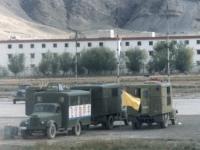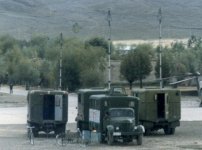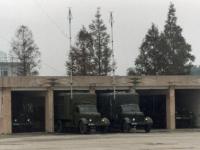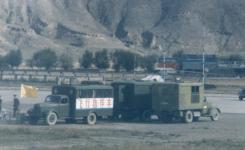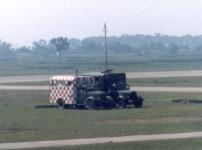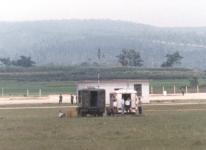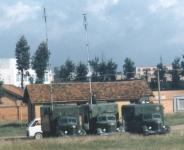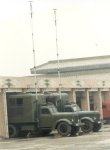





China has an extensive network of hardened, underground shelters and command and control facilities for both its military and civilian leadership. Fear of a possible war with the former Soviet Union in the 1960s and 1970s prompted Beijing to expend considerable resources constructing national level command posts, civil defense facilities and associated communications. These facilities are intended to ensure survival of China's leadership and provide a refuge from which it can maintain control over the country's military forces. Both civil and military communications networks support these facilities. The military communications network probably is separate from the civil telecommunications network, although it is possible that the two could be linked, a capability the PLA would be expected to exploit in time of crisis. China�s military national level command and control communications are carried over multiple transmission systems in order to create a military communications system which is survivable, secure, flexible, mobile and less vulnerable to exploitation, destruction or electronic attack. China's communications networks are capable of supporting PLA military operations within China's borders; while they could be degraded, they could not be denied completely.
Microwave communications equipment most likely is present at installations belonging to all branches of the PLA. Chinese open sources report that the 2nd Artillery has a new digital microwave communications system to support its missile launches. The 2nd Artillery signal unit reportedly started developing the system around 1995 and it passed acceptance tests a few years later. This new system reportedly provides the 2nd Artillery with all weather and encrypted communication ability.
China�s military communications network continues to be upgraded; however, the bulk of China�s military communications reportedly is processed on communications lines run by the Ministry of Information Industry. Both networks are composed largely of commercial off-the-shelf technology. This technology either is not restricted for sale to China or recently was decontrolled, although Beijing probably has been successful in obtaining some restricted technology to modernize its telecommunications network. Europe, Japan and Israel compete to sell telecommunications technology, as well as related hardware and software, to China.
China has made significant efforts to modernize and improve its command, control, communications, computers, and intelligence (C4I) infrastructure. Chinese military leaders have expressed their belief that advances in telecommunications technology will be an important factor in the outcome of any future conflicts. This advanced technology will involve different arms and services and impact every aspect of battle. China is working to improve its C4I capabilities. Planned improvements include better coordination, more effective construction of C4I systems, and providing all military echelons with the technology required to have a unified C4I system capable of satisfying combat requirements.
C4I modernization and automation has been a top Chinese priority since at least 1979. This effort has produced a command automation data network capable of rapidly passing operational orders down the chain of command and moving information to national and theater level decision makers. However, China's C4I infrastructure, including the command automation data network portions, is not capable of controlling or directing military forces in a sophisticated, western style joint operating environment. The command automation data network is capable of supporting PLA peacetime operations within China's borders. The command automation data network also can support limited preplanned conventional attack options along China's periphery. China still lags far behind western standards for controlling complex joint operations and lacks the robust C4I architecture required to meet the demands of the modern battlefield.
The current wire and radio communications equipment of the PLA is at least two generations behind that of Western countries. However, the PLA has made progress in modernizing its C4I system, completing an automated command and control system, developing a new type of general field communications system, and disseminating new general signal regulations.
In recent years, China has emphasized the need to modernize command automation systems, which previously were reportedly used for divisional and regimental training. With the appropriate equipment, a group army conducting battlefield exercises today can use an advanced-level automation system that integrates field command, operational simulation, and computer plotting. Unlike the old system, which used telegrams and telephones, the new system allows the group army to write its documents electronically and to transmit these documents and a commander�s verbal orders through a network to division and regimental commands as well as to forward positions a long distance from headquarters.Currently, however, only a few PLA group armies are believed to have the equipment necessary for group army-level command automation. The PLA has conducted research on the key technologies required to develop an Integrated Battlefield Area Communications System (IBACS). The Institute of Information Science, Xidian University, China�s highest level military communications institute, is currently conducting research in such areas as speech signal processing, broadband integrated services digital networks (B-ISDN), and application-specific integrated-circuit (ASIC) design. These research efforts are beginning the transition into both experimental and fielded communications systems. Because most PLA command and control systems are still manual, there are long delays in dissemination of directives. To improve this situation in air defense, China has developed an automated tactical air defense C4I system. This system provides field air defense weapons with rapid and accurate intelligence and maximizes unit combat effectiveness and firepower.